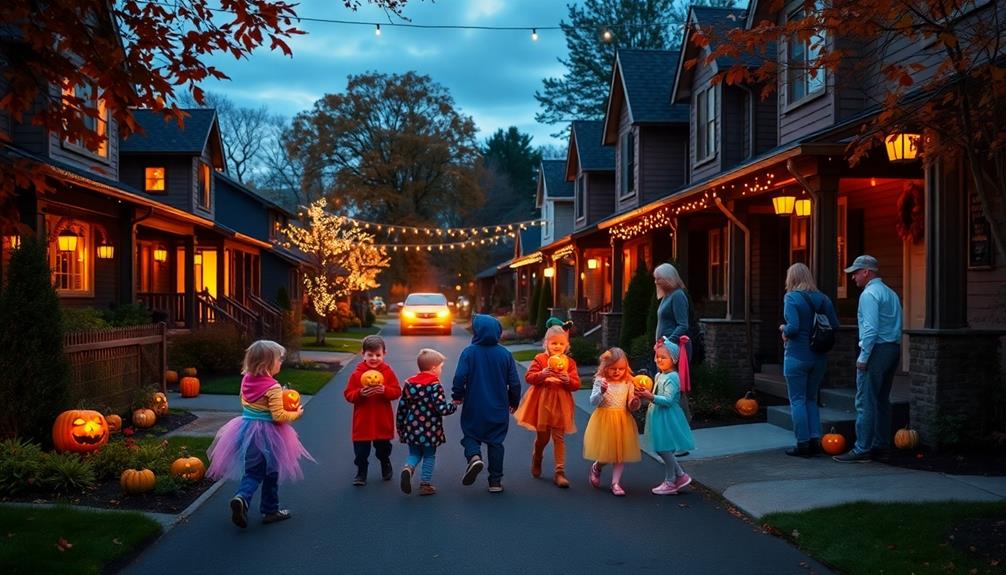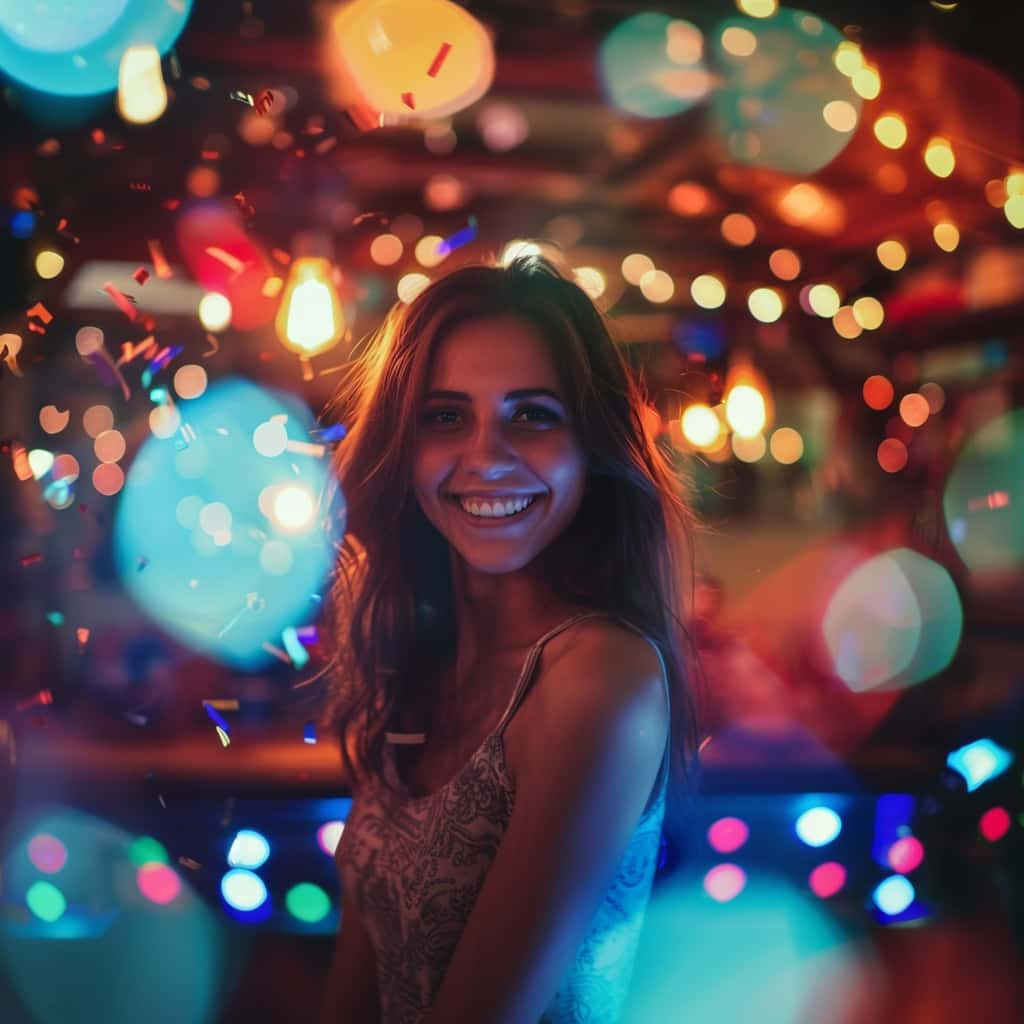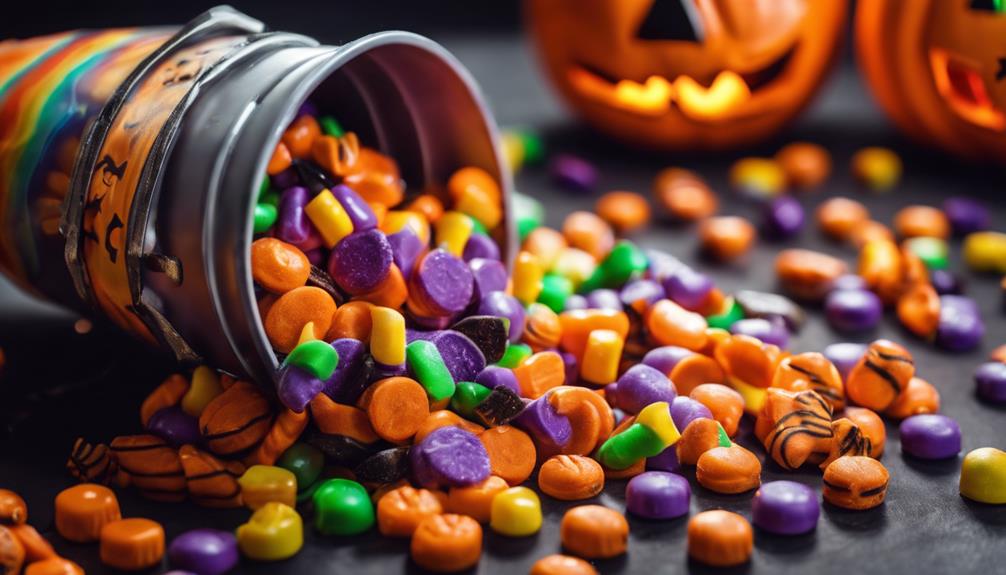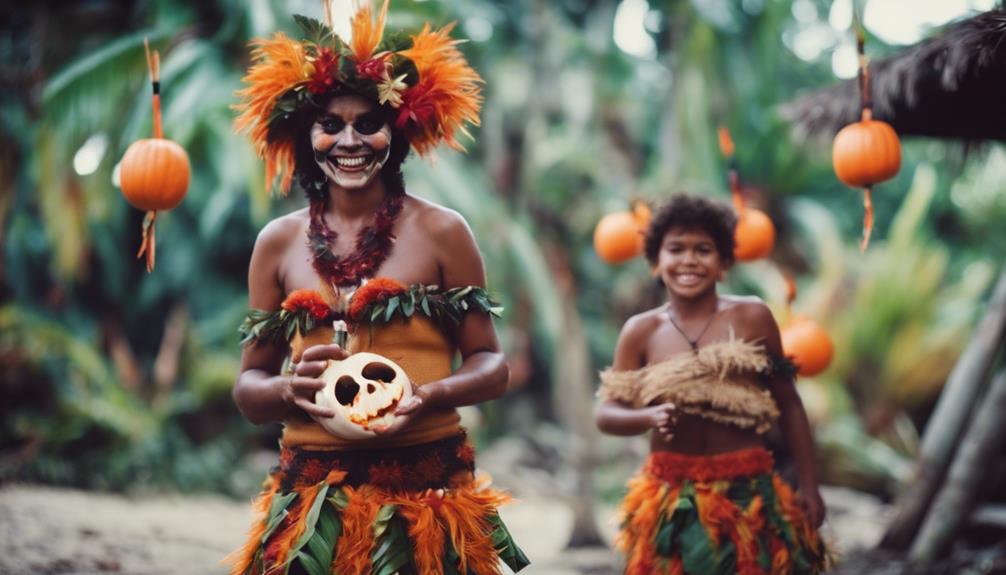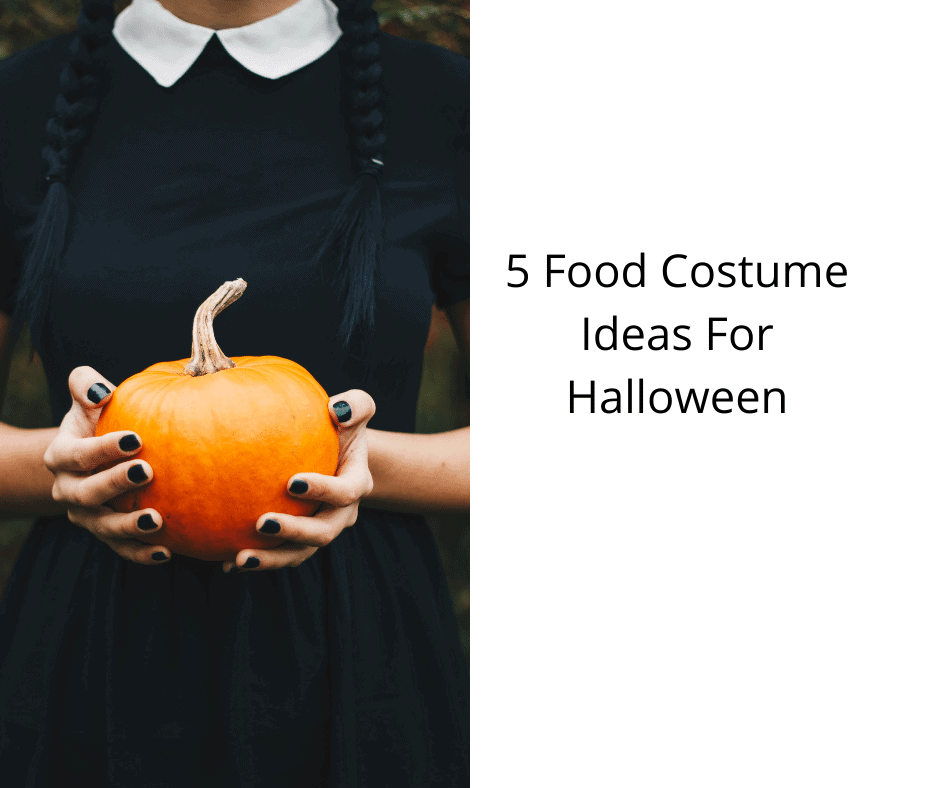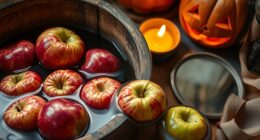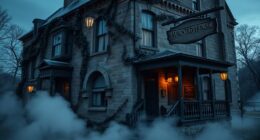To incorporate traditional folklore into your Halloween costume, start by researching local legends and mythological figures. Choose a character that resonates with you, like a Banshee or Selkie, and personalize your look with specific colors and accessories that reflect their story. Use authentic materials like cotton or linen, and include cultural symbols to enhance your costume's significance. Consider collaborating with friends for a cohesive group theme, and participate in community events to share ideas and inspiration. Embracing these elements can create a costume that's not only visually striking but also rooted in storytelling—there's more to explore on this journey!
Key Takeaways
- Research local folklore to discover unique characters and stories that can inspire your Halloween costume design.
- Personalize your costume by selecting a folklore character and incorporating their symbolic attributes and vibrant color schemes.
- Utilize authentic materials and traditional accessories to enhance the cultural significance of your costume.
- Design your costume with natural elements and traditional patterns for visual impact and historical accuracy.
- Collaborate with others to create a cohesive group representation of folklore characters and share resources for creativity.
Research Local Folklore

When you immerse yourself in researching local folklore, you'll uncover a treasure trove of unique mythological figures and creatures that can inspire your Halloween costume. Each region boasts its own legendary monsters, like the Wendigo in Algonquian culture or the Bunyip in Australian Aboriginal mythology.
These unique mythological figures offer rich material for costume ideas that pay homage to your area's heritage. For instance, exploring the stories of the Hopi Tribe reveals their rich cultural identity and connection to the Earth, which could inspire costumes that reflect their traditions and spiritual beliefs, such as elements of their pottery or sacred symbols Hopi cultural identity.
Digging deeper into local history can reveal lesser-known characters, such as the Sidhe in Irish lore, which adds authenticity and depth to your Halloween attire. To get started, visit local libraries or historical societies, where you can find valuable information on regional tales and characters.
These resources can lead you to fascinating stories that will elevate your costume game. Additionally, participating in community events or folklore festivals allows you to engage with local narratives firsthand. You can gather insights and incorporate elements from these cultural stories into your Halloween costume.
Choose a Character

When you choose a character from traditional folklore, you connect with stories that carry cultural significance.
Think about what resonates with you, whether it's the mysterious Banshee or the playful Puca, and let their traits inspire your costume.
Popular Folklore Characters
Often, the Banshee stands out as a hauntingly beautiful choice for Halloween costumes inspired by folklore. This iconic figure from Irish mythology is renowned for her flowing white or gray garments and long hair, coupled with mournful wails that foretell death. If you're considering embodying the Banshee, here's how to make your costume truly enchanting:
| Element | Description | Tips |
|---|---|---|
| Outfit | Flowing white/gray dress | Look for sheer fabrics |
| Hair | Long, loose waves or wild curls | Use temporary hair color |
| Accessories | Silver jewelry or ethereal shawls | Add a touch of sparkle |
To enhance the eerie effect, incorporate makeup that gives you a ghostly appearance. Think pale skin tones and dark, dramatic eyes. You can also carry a prop that symbolizes your character, like a lantern, to add an ethereal glow. With the Banshee as your inspiration, your Halloween costume will resonate with the rich tapestry of folklore, making it both stunning and unforgettable. Embrace the haunting allure that comes with this choice!
Cultural Significance Explained
Embodying a character like The Morrigan not only gives your Halloween costume a striking visual appeal but also infuses it with profound cultural significance. As a goddess of war and fate in Irish mythology, The Morrigan embodies themes of death and prophecy, particularly relevant during Samhain, the festival marking the end of the harvest season. By choosing her, your costume transcends mere aesthetic and taps into the rich tapestry of Celtic beliefs.
Additionally, incorporating elements that celebrate hands-on learning and exploration can enhance the overall experience of your costume choice, allowing for deeper engagement with the cultural narrative behind The Morrigan. Montessori toys can inspire creativity in how you represent her.
While Greek mythology is often the focus during Halloween, exploring characters like The Morrigan allows you to celebrate lesser-known traditions. The emotional depth associated with her character resonates with the balance of life and death, making your costume a powerful statement.
Moreover, The Morrigan reflects the essence of transformation and the cyclical nature of existence, aligning perfectly with Halloween's themes of change. Your choice not only honors cultural significance but also sparks conversations about the narratives that shape our understanding of folklore.
This Halloween, when you don The Morrigan, you're not just dressing up; you're embodying a powerful symbol of heritage and storytelling.
Costume Inspiration Sources
Choosing a character from traditional folklore for your Halloween costume can lead to an enchanting and meaningful experience. Immerse yourself in the mystical dimensions of Celtic mythology or even explore the grandeur of Greek mythology.
For instance, consider the horned Celtic god Cernunnos, whose nature-inspired costume can be brought to life with earthy tones and impressive antlers.
Alternatively, channel the fierce energy of The Morrigan, the goddess of war and fate. You can create a striking look with dramatic black feathers and bold makeup that embody her powerful essence.
If you're drawn to mythical creatures, the Selkie offers a whimsical option—blend aquatic elements with shimmery fabrics to capture her magical transformation from seal to human.
For a haunting vibe, the Banshee, known for her mournful appearance, can inspire a ghostly costume featuring white clothing and pale makeup.
Finally, embrace the playful spirit of the Puca, a shape-shifting trickster. Craft a versatile costume using varied textures and colors to showcase your mischievous side.
No matter your choice, your folklore-inspired costume will surely stand out this Halloween!
Design Your Costume

When designing your costume, start by immersing yourself in the rich tapestry of traditional folklore. Consider characters like the Morrigan or Cernunnos from Celtic mythology. Their stories can inspire unique costumes for Halloween that resonate with deeper meanings.
Utilize natural elements such as leaves, feathers, and earthy tones to represent deities tied to nature, like Ghillie Dhu. This adds a visual impact that enhances your connection to folklore. Incorporate traditional accessories, like torcs or crowns made from natural materials, to elevate authenticity and craftsmanship in your design.
To help you brainstorm, here's a quick reference table:
| Character | Key Elements | Costume Ideas |
|---|---|---|
| Morrigan | Dark colors, crow motifs | Cloak, feathered crown |
| Banshee | Ethereal fabrics, ghostly colors | Flowing dress, veil |
| Selkie | Aquatic colors, marine accessories | Shells, fishnet elements |
Use Authentic Materials

Crafting a costume that resonates with traditional folklore goes beyond just design; it's about the materials you choose. By incorporating authentic materials like natural fibers such as cotton or linen, you can reflect the traditional styles found in folklore costumes. This adds historical accuracy and depth to your outfit, making it truly stand out.
Contemplate incorporating elements inspired by fermented vegetable plate aesthetics, using vibrant colors and textures reminiscent of fresh produce.
Don't overlook handmade accessories, either. Items like torcs or leaf crowns can help emulate Celtic deities, such as Cernunnos or Ghillie Dhu, emphasizing your connection to nature and ancient customs. You might want to contemplate sourcing these materials from local artisans or vintage shops, ensuring that your costume resonates with the cultural significance of your chosen character.
Utilizing organic dyes or natural embellishments, like feathers or flowers, can also create a more authentic look, aligning with various mythical beings like the Selkie or Puca.
Additionally, researching traditional patterns relevant to your character can enhance your costume, allowing you to weave the rich tapestry of folklore into your Halloween representation. By focusing on authentic materials, you'll not only create a striking costume but also foster a deeper appreciation for the traditions you're celebrating.
Add Cultural Symbols

Incorporating cultural symbols into your Halloween costume can elevate its connection to traditional folklore, making your outfit even more impactful. By adding elements that reflect the rich heritage of ancient Celtic mythology, you can create a costume that tells a story.
Consider using symbols associated with specific deities, like a torc for Cernunnos, representing nature and fertility. Accessories like a crow or raven can embody The Morrigan, signifying death and fate. You might even carry a prop that represents The Dagda's Lorg Mór to highlight ancient customs. Here's a quick guide to some cultural symbols you can incorporate:
| Cultural Symbol | Meaning |
|---|---|
| Torc | Nature and fertility (Cernunnos) |
| Crow/Raven | Death and prophecy (The Morrigan) |
| Giant Club | Ancient traditions (The Dagda) |
| Flowing White Garb | Messenger of death (Banshee) |
Embrace these cultural symbols as you prepare for trick or treating, and you'll not only stand out but also honor the folklore that enriches this festive occasion.
Personalize Your Costume

Personalization brings your Halloween costume to life, allowing you to express a deeper connection to traditional folklore.
To truly capture the essence of your chosen character, make sure you focus on these key elements in your costume design:
- Research Characters: Immerse yourself in the traits and symbolism of traditional folklore characters like the Banshee or Cernunnos. Understanding the impact of ghost stories can help you embody their spirit even more authentically.
- Incorporate Colors and Accessories: Use color schemes and accessories that reflect your character. For example, a Banshee's ghostly essence can be captured with pale makeup and a flowing white dress.
- DIY Components: Enhance authenticity by crafting your own elements. Create wings for a Selkie costume or a torc for Cernunnos to add a personal touch.
- Meaningful Accessories: Highlight the mythology behind your character by adding accessories like a faux crow for The Morrigan or a small jack-o-lantern for Stingy Jack.
Collaborate With Others

Working together with friends or family can elevate your Halloween costume experience, turning individual creativity into a shared celebration of folklore. When you collaborate with others, each person can take on different characters from the same folklore narrative, like forming a group of Celtic deities or mythical creatures such as the Morrigan and Cernunnos.
Sharing resources and supplies not only cuts down costs but also fosters teamwork, allowing family members to craft unique costumes together. Group discussions about character selection can deepen your understanding of folklore themes, exploring the significance of figures like the Banshee or the Puca in Irish mythology, enriching your overall costume experience.
Assigning specific roles within your group—like designers, builders, and wearers—streamlines the preparation process and guarantees everyone contributes to the final look. This mirrors the collaborative spirit found in traditional storytelling.
Plus, participating in local Halloween events or parades as a coordinated group amplifies the impact of your folklore-inspired costumes, drawing attention and sparking conversations about the rich cultural narratives behind each character.
Connect With Community

Connecting with your community can enhance your Halloween experience while celebrating traditional folklore. By engaging with others, you not only share your love for folklore-themed costumes but also foster connections that enrich your celebrations. Incorporating elements from local legends can also inspire creative costume ideas, making your Halloween experience even more meaningful.
Here are some ways to connect:
- Attend Community Events: Join local Halloween parades or festivals where you can showcase your folklore-themed costumes and meet fellow enthusiasts.
- Organize Costume Swaps: Host a costume swap in your neighborhood. This promotes creativity and sustainability while allowing participants to share folklore-inspired outfits.
- Participate in Storytelling Sessions: Get involved in storytelling sessions that highlight local legends. These sessions can inspire unique costume ideas and deepen your understanding of local folklore, especially if you explore traditional folklore.
- Collaborate on Costume Contests: Work with local schools or community centers to organize folklore-themed costume contests. This encourages families to explore traditional characters and promotes community engagement.
Utilizing social media to share your folklore-inspired creations can also spark dialogue and appreciation for cultural heritage.
Frequently Asked Questions
What Is an Example of Cultural Appropriation in Halloween Costumes?
A common example of cultural appropriation in Halloween costumes is wearing Native American headdresses. These items carry significant cultural meaning, and using them without understanding can trivialize important traditions, leading to disrespect and perpetuating harmful stereotypes.
What Makes a Halloween Costume Offensive?
Research shows 70% of people find costumes that stereotype cultures offensive. Halloween costumes can be offensive when they trivialize serious issues, mock marginalized groups, or misrepresent cultural symbols, undermining respect and perpetuating harmful narratives.
Which Ancient Culture Do Most of Our Halloween Costumes Come From?
Most of your Halloween costumes trace back to ancient Celtic traditions, particularly the festival of Samhain. This celebration marked the change from harvest to winter, influencing how you choose to dress for Halloween today.
What Is the Most Traditional Halloween Costume?
When you think about the most traditional Halloween costume, you can't ignore witches. They've captivated imaginations for centuries, embodying mystery, magic, and a sprinkle of modern sass that keeps Halloween thrilling and fun for everyone.
Conclusion
By weaving traditional folklore into your Halloween costume, you're not just dressing up; you're breathing life into age-old tales that dance in the shadows. Embrace the magic of your heritage and let your creativity flow like a river through the hills of history. Each stitch and symbol tells a story, connecting you with the past and your community. So go ahead, step into the domain of legends, and let your costume be a vibrant tapestry of culture and imagination.

